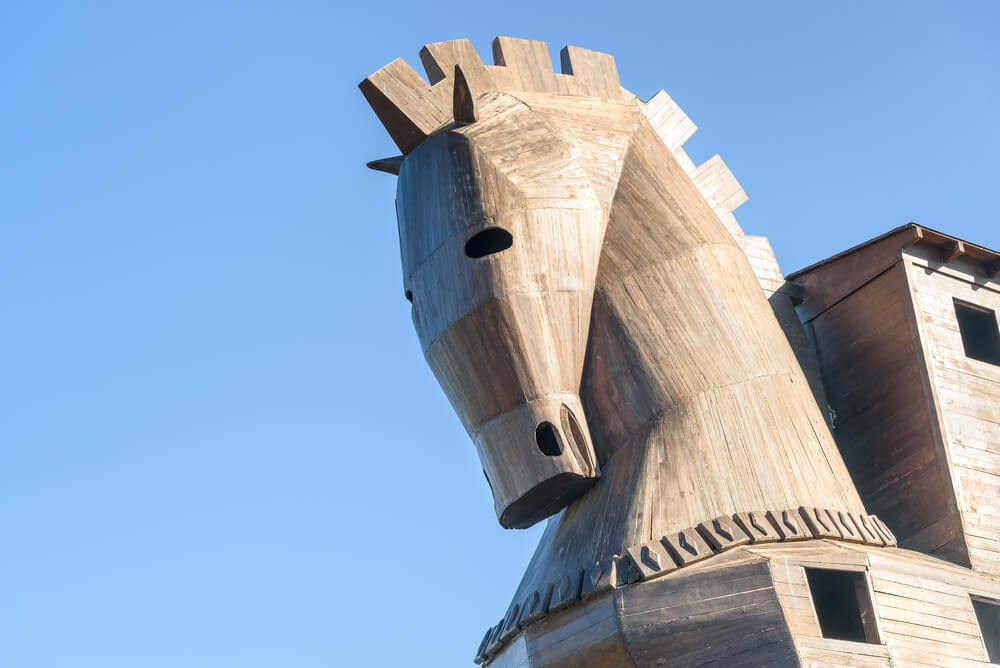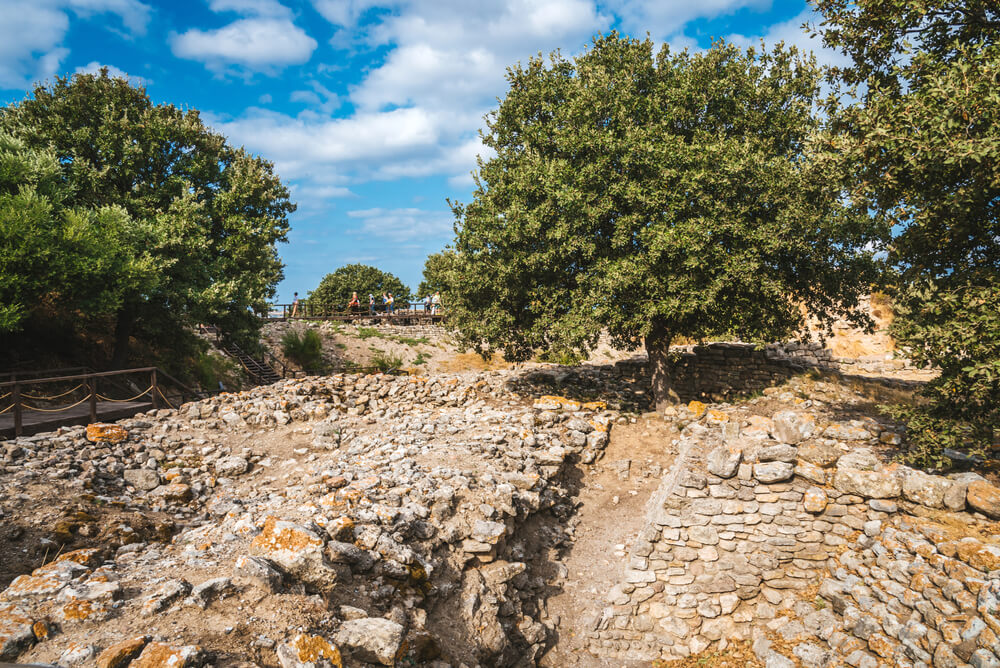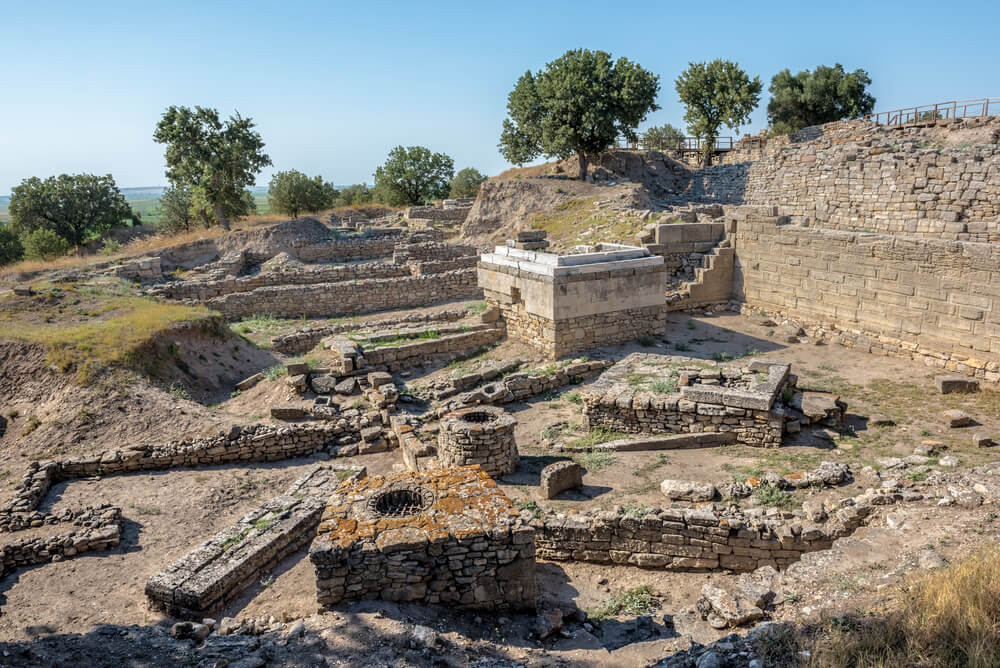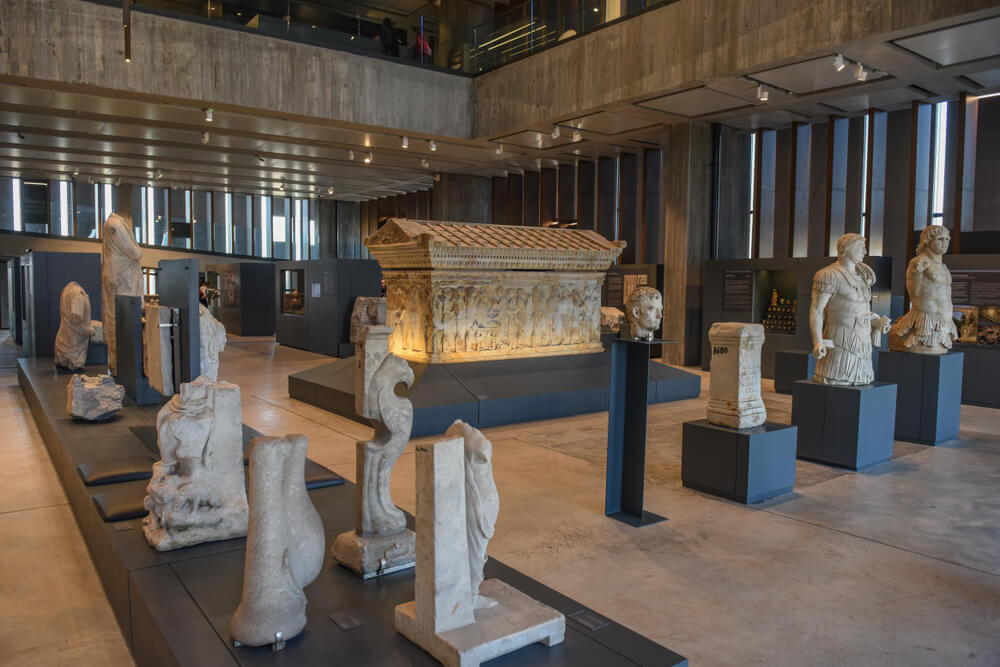
One of the most important elements of Greek mythology, the Trojan Horse, has an epic story that has been the subject of both films and novels. This legend gave birth to the term “Trojan Horse,” which is still used today in strategic maneuvers. While the Trojan Horse legend, which has been passed down through centuries in Greek mythology, continues to be known today, let’s explore this story together. Let’s trace the history of the Trojan Horse and the world-famous ancient city of Troy in Çanakkale, which is rooted in a war fought for Helen, said to be the most beautiful woman in the world.

Where is the City of Troy (Truva)? The story takes place 3,200 years ago on the lands we live on today, in the city of Troy, near the Dardanelles (Çanakkale Strait). In ancient Greek, Troy (Troia) is known as Ilion, and in Turkish, the name of the ancient city is Truva. Truva, one of the most famous archaeological sites in the world, was discovered in 1870 by German archaeologist Heinrich Schliemann at today’s Hisarlık location on the Biga Peninsula, Çanakkale. This city, where the Trojan War took place, has been excavated intermittently since 1870. It reveals 5,000 years of human history. Various empires ruled over the lands of Troy, including the Persians, Alexander the Great, the Seleucids, the Kingdom of Pergamon, and the Romans. Due to its location, ideal for maritime trade, it was constantly invaded, destroyed, and rebuilt many times. The ancient city of Troy was added to the UNESCO World Heritage List in 1998.

What is the Story of the Trojan Horse? The Trojan War, mentioned in Homer’s epic Iliad, is said to be the first major war between East and West. This great war was fought between the Achaeans (Greeks) and the Trojans (Truvalılar). Although the real reason for the Trojan War was that many states wanted to control the strategically significant region of Çanakkale, the war was sparked by a love story that has become legendary over time.
According to the legendary tale, Paris, the son of King Priam of Troy, falls in love with Helen, the wife of King Menelaus of Sparta, and with her consent, he brings her to Troy. Enraged, King Menelaus gathers all the Greek states to his side and declares war on Troy to take back both Helen and the city. This war, which took place around 500 BC, lasted for about 10 years. The long war between the Achaeans and the Trojans had exhausted the soldiers. Odysseus, a commander of the Achaeans known for his intelligence and bravery, comes up with a cunning plan that will change the course of the war: building a gigantic wooden horse, later to be known as the Trojan Horse.

The Trojan Horse Maneuver Odysseus and his best soldiers hide inside the enormous wooden horse. The Achaeans, pretending to retreat from the war, leave the wooden horse at the gates of Troy with a soldier and then flee. The Achaean soldier left behind tells the Trojans that the Achaeans needed to sacrifice a soldier to ensure safe passage, and that he had been chosen as the sacrifice, which is why he resents them. He also claims that the wooden horse was made in honor of the goddess Athena and that if the Trojans destroy it, they will incur Athena’s
At dawn, the Achaean soldiers hidden inside the wooden horse emerge and open the gates for the other Achaeans, who had pretended to flee but had actually hidden nearby. The Trojans are taken by surprise. Although they try to fight back, the Achaeans, being well-rested and organized, overpower them. The Achaean soldiers capture and destroy the city. King Menelaus, the leader of the army, takes Helen back to Greece. According to legend, Helen and King Menelaus lived together until the end of their lives.

Where is the Statue of the Trojan Horse? The Trojan War is recorded in history as a great war won through deception. The giant wooden horse, which played a key role in the Trojan War, is depicted in a statue that greets visitors at the entrance of the ancient city of Troy. Another statue of the Trojan Horse is located in the city center of Çanakkale, at Kordon. This statue was used in the 2004 film Troy, produced by Warner Bros., and was gifted to the Municipality of Çanakkale.



